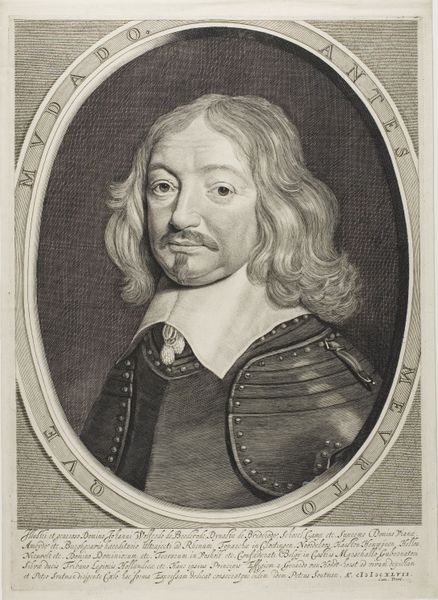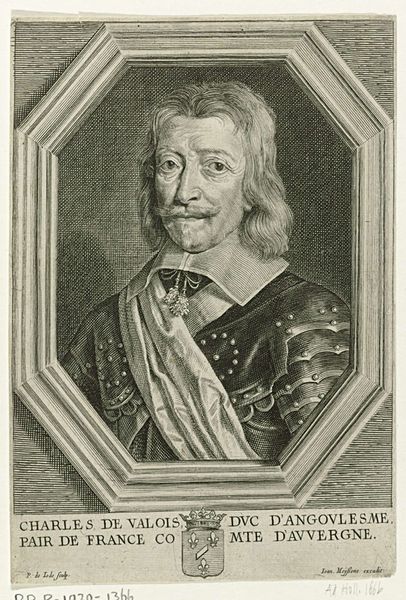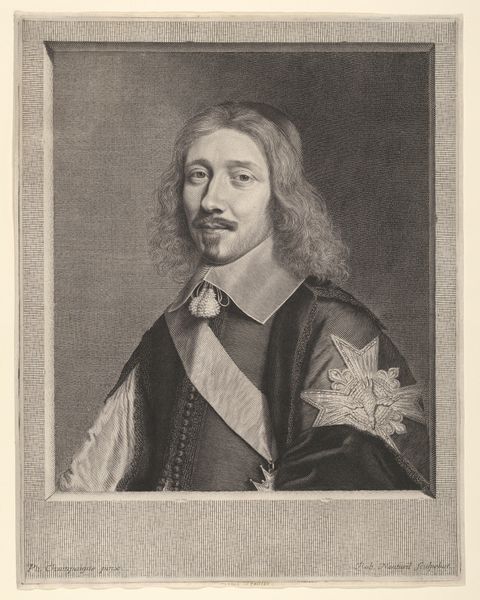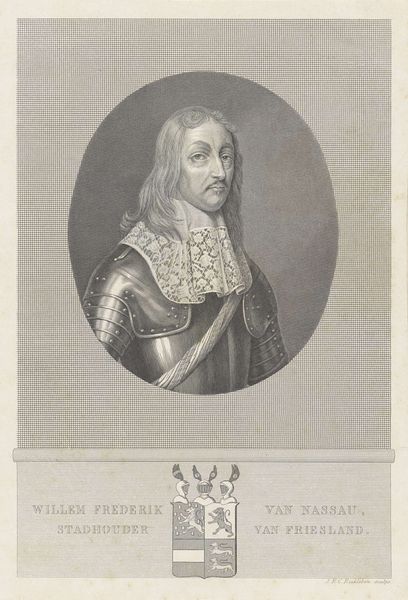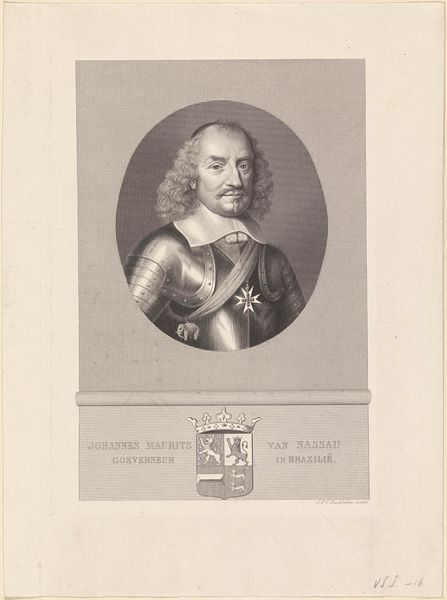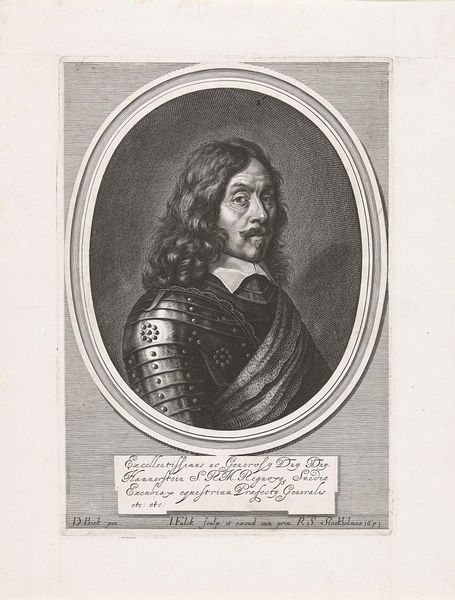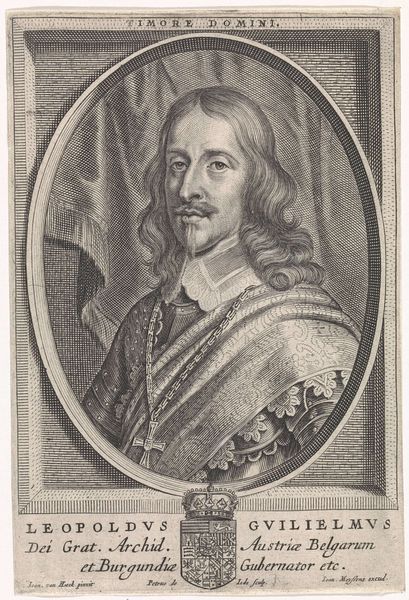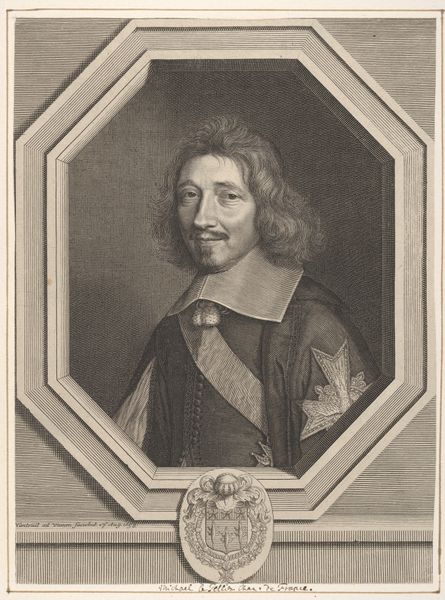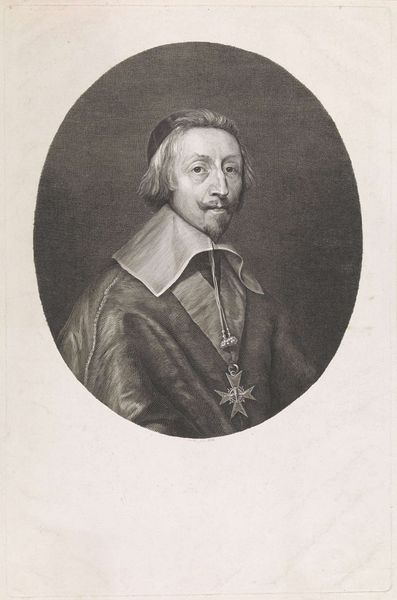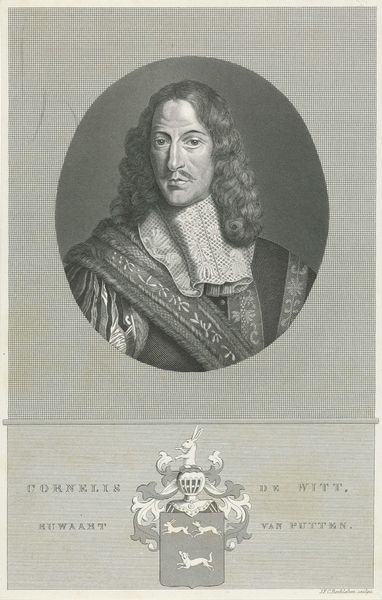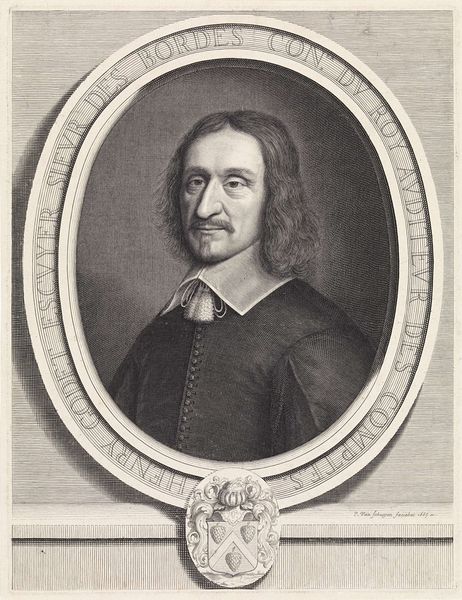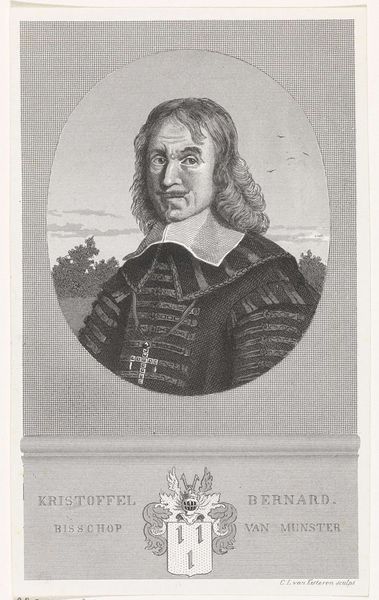
print, etching, engraving
#
portrait
#
medieval
# print
#
etching
#
figuration
#
historical photography
#
line
#
history-painting
#
engraving
#
realism
Dimensions: height 235 mm, width 145 mm
Copyright: Rijks Museum: Open Domain
Curator: Before us hangs Jan Frederik Christiaan Reckleben's "Portrait of Joan Wolfert van Brederode," completed between 1861 and 1863. The Rijksmuseum is its home. Editor: It's striking how formal and somber it feels. The monochrome palette, combined with the rigid pose, suggests a deep sense of historical gravity. Curator: Observe how the artist employed etching and engraving techniques to render form. Consider the density of lines to establish the shadows in his face and the gleam on the armor. The composition, divided horizontally between portrait and heraldic crest, adheres to academic convention, providing visual weight. Editor: The choice of the lion rampant on the coat of arms carries significant meaning. Lions traditionally symbolize courage, nobility, and royalty. It implies that van Brederode possessed these qualities, or perhaps that the artist wished to convey this impression to the audience. I can’t help wondering who this man was, and why someone wanted to capture his likeness for posterity. Curator: Reckleben meticulously rendered van Brederode’s visage. It is an effort, it seems, to present him with a calm resolve. There is clear purpose behind the etching, in its controlled tonality and line work, not just the likeness of the subject but of how we're intended to perceive the sitter, no doubt influenced by its intended public and patron. Editor: Yes, that visual tension really does add another layer to the portrait. There’s a very interesting play here with status and its representation. His formal bearing is a demonstration of power as much as a biographical representation. The armor almost becomes an abstraction—of power, status and the right to leadership, regardless of individual qualities. It reveals just as much about the time in which it was produced as the sitter it portrays. Curator: Indeed, it's this careful calculation that allows the etching to still be resonant. The details, the artistic treatment—these elevate the image beyond mere documentation. Editor: Reflecting on the print, I appreciate how it provides a window into the ways historical figures used symbols to cement their identities and how we continue to interpret these symbolic forms even today. Curator: And I find myself returning to its skillful execution and artistic construction that still allow this symbolic function to remain impactful, rather than letting it fade into period decoration.
Comments
No comments
Be the first to comment and join the conversation on the ultimate creative platform.
